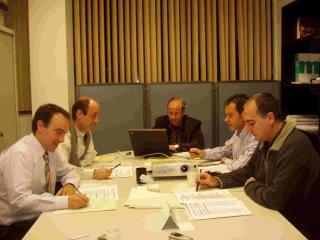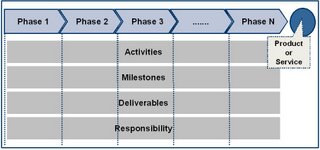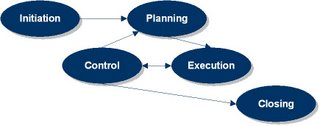 Ahir, dijous, va tenir lloc la reunió del Claustre de Professors del Postgrau en Direcció de Projectes, coorganitzat per ASCAMM i les Escoles Universitàries Gimbernat, i del qual en sóc co-director, conjuntament amb en Manel Taboada, d’EU Gimbernat.
Ahir, dijous, va tenir lloc la reunió del Claustre de Professors del Postgrau en Direcció de Projectes, coorganitzat per ASCAMM i les Escoles Universitàries Gimbernat, i del qual en sóc co-director, conjuntament amb en Manel Taboada, d’EU Gimbernat.El principal objectiu de la trobada consistia en coordinar totes les accions docents que durem a terme durant l’execució del programa, entre els mesos de febrer i juny del 2007.
El claustre està format pels següents professionals:
- − Ramon Costa i Pujol, Enginyer en Informàtica, PDG, Director Serveis de Formació ASCAMM.
- − Lleonard del Río, Enginyer en Informàtica, MCSE, MCSD, Soci Director Raona
- − Toni Díaz, Excel JCI, Assessor CCS
- − Salvi Hernàndez, PDG IESE, Director General SIGMA Consulting Asociados
- − Ricard Jiménez, Doctor en Física, Director Tècnic Plastia
- − Toni Monte, Enginyer Superior en Telecomunicacions, MPM, Director de Projectes UPCPlus,
- − Xavier Plantà. Enginyer Tècnic Industrial, Director d’Innovació ASCAMM
- − Miquel Rodríguez, Enginyer Tècnic en Informàtica, MBA, MGTI, Consultor Independent TIC.
- − Manel Taboada, Llicenciat en Administració d’Empreses, Professor Titular Escoles Universitàries Gimbernat
El Postgrau presenta un currículum formatiu format per 4 mòduls de capacitació generalista en la Definició, Planificació i Gestió de Projectes i dels seus principals aspectes (abast, temps, equip de treball, comunicació, riscs, qualitat,...) i proposa un 5è mòdul, optatiu, d’especialització en l’ús i treball de metodologies de gestió de projectes informàtics.
Els diferents conceptes base i processos treballats en aquest postgrau estan basats en el “Project Management Body of Knowledge” del Project Management Institute (PMI) i durant el curs es comptarà amb la participació de Responsables de Caps de Projecte de diferents organitzacions, per tal de què complementin els aspectes treballats amb la seva experiència.
Podeu consultar el programa a http://formacio.ascamm.com/formacio-superior

